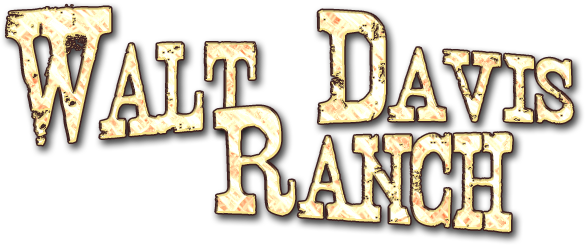
Walt Davis - Author, Agricultural Consultant, and Rancher

The Rules of Hard Times Economics
- Expenses always rise to meet the level of disposable income. Now is the time to reassess the difference between "we need" and "we want".
- Maximum production is seldom if ever as profitable as some lesser level of production due to the laws of diminishing returns and marginal reaction.
- Ranching is not the business of producing livestock but rather the business of converting solar energy into biological energy and thus into money.
- The land (defined as the total soil-plant-animal complex) is the source of all new wealth. The ability of the land to produce wealth (except for mining operations) is in direct proportion to its' biological capital. Biological capital is bio-diversity plus the long-term effects of bio-diversity. Biological capital consists of healthy populations of healthy individuals of many species of plants and animals fully utilizing the available resources and in the process improving the resources.
- Get your program in tune with nature and take advantage of all the freebies that are available. Design your operation so that the period of greatest nutrient demand coincides with the period of most nutrient supply.
- If you are producing a commodity, in order to consistently make a profit you must be a low cost producer.
- All operations are made up of multiple enterprises (any endeavor that produces or consumes income). Analyzing all enterprises and discarding the unprofitable can be the difference between success and failure.
- Most people do not succeed so that doing what is accepted as the norm is a recipe for failure. Most people also do not wish to see others succeed and are quick to ridicule any departure from standard behavior.
- Agriculture is the most over capitalized industry in the US. Most ranches have far too much money tied up in machinery and improvements.
- Much of the money spent on pest and disease control is wasted and often the "cure" is worse than the malady. Most problem organisms are symptoms of poor management. Any practice that destroys life should be carefully monitored to see if its' effects are the ones desired.
- Stability of production is at least as important to consistent profitability as is level of production. Stability is a function of bio-diversity and the operations that survive the "drought of the century" and the "market wreck" will be the ones who store up biological capital during good times.
- All agriculture is inherently risky since it is subject to factors such as weather, markets and politics over which the producer has little influence. When profit margins are thin is a poor time to increase inputs in the hope of increasing production. Increased inputs at this stage are valid only when they decrease the cost per unit of production or reduce the likelihood of production failure.
- All life forms have a set of environmental circumstances to which they are adapted. Do not attempt to move plants or animals out of their area of adaptation or even worse attempt to modify an area to suit non-adapted plants or animals.
- Planning is the most important work that a manager can do. Planning production is fun but planning profitability is more rewarding. Pay yourself first; plan profit into your program just as you plan to pay the mortgage. Most crises come about from a lack of planning. If you are a good problem solver, you are a poor manager. Good managers plan so as to prevent problems and don’t get enough practice at problem solving to get good at it.
- Realize that Con-Agri doesn't care whether or not you make a profit. Produce the cattle that work under your conditions not cattle that "fit the box" or meet the "demand of the trade".
- Understand that the feedlot industry has nothing to do with the cattle business. It is solely concerned with selling cheap grain and renting lot space. The packers and feeders don't want a ruminant capable of thriving on grass. They want a pig in a cow suit that can eat 30# of corn, gain 5# a day and dress 70%.
Walt Davis 1994




